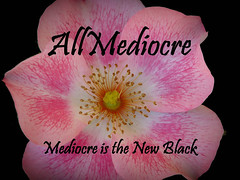Writing workshop day 3 was a spirited discussion of memory - how to write a memoir without necessarily having documented quotes and photographic evidence.
It was all very interesting. Memory is fluid. Memory is subjective. And we each have our own truths. So writing a memoir that is true to us, may not ring true to others. It's a mystery wrapped in an enigma, people. And One of the major sticking points in my writing was being very concerned about the reliability of my memory, which is admittedly fuzzy. I don't want to mis-speak, and I also don't want my content to hurt or offend anyone. It goes without saying that I don't want to find myself "Frey-ed" - accused of writing fiction and labeling it as memoir. So, how to approach the truth when separated by time and distance and a mind that has self-preservation at the forefront of every decision, as human minds generally do?
It's funny, while I understood each of the reading assignments, and their relevance to writing a memoir, the writing PROMPTS didn't really seem connected. Until I was told to describe my book as a house. What kind of house was it? Where was it? Tall ceilings? Big windows? City? Country?
So I sat down to describe my memoir as a house, and of course the houses that came to mind were houses from my childhood. Specifically, my paternal grandparents' houses. A 15 minute reflection on the house that describes my life's story:
There are two lives, in this story. Therefore, there must be two houses. They are both my grandparents'. Rather than reinvent the wheel, it is simpler just to say that. And I believe that once I have described them to you you will understand why, rather than creating a fantasy in my mind, I will describe a true Camelot of sorts.
The first is the "before". Before is in the same tiny village I grew up in, filled with two story capes in a classical New England style, with wide plank siding and 9 over 6 windows and fireplaces to stave off the winter's chill blowing in off of Long Island Sound. Before was old trees and tall hedges, a cul de sac behind the house filled with cars, a barn beyond that had been parceled out, sold off and renovated. And on the other side of a fence, the village playground.
We always entered from the back, the door opening into a sunny kitchen with a breakfast nook and wide counters, a huge stove against the side wall in almost constant use. There was a pantry and a maid's room - which was now a mud room, filled with boots, clinging pieces of hay and grass, the slight smell of manure from the horses.
There was a narrow stairway leading up to the second floor, and a swinging door with a window in it leading out towards the living rooms.
If you had been a guest arriving for the first time, you would have entered by the front door - if only to have the opportunity to make a grand entrance for once in your life. From the street, there was a wide path leading up to the broad stairs. Massive white pillars held up the two story rounded awning. Stained glass surrounded the heavy wooden doors. You would enter and find yourselves in a huge hall, the ceilings soaring far above you, suspending an enormous chandelier, gracious seating scattered thoughtfully around and gorgeous oriental carpets underfoot, with rich jewel tones of rubies and sapphires. The stairs arched upward in a truly grand staircase, leading to an open sitting area, and the bedrooms.
In time, the house was sold and a new one was purchased. And my memory of childhood is devided into the "Before" of the house in the village, and the "After" of this new property. The new home was a low slung behemoth, a 200 year-old shingled cape with an enormous addition added on and shingled in the same weathered natural wood, as though 200 years ago they were building enormous asymmetrical modern homes with indoor swimming pools. The original house was low-ceilinged, the entire second floor tucked under the eaves. The only nod to the modern was the enormous commercial range in the kitchen. The family continued to expand as children gave birth to children. Holidays were impossible to manage.
The addition was modern incarnate: all cathedral ceilings and wood floors and lit glass shelves and gently sloping hallways lined with portraits, each lit individually for proper appreciation.
There was a grand piano for the grandchildren to play for the entertainment of the adults.
In the basement was the pool table, and the wine cellar - a necessary addition due to the vineyard extending for acres behind the property. There was potential back there, my grandfather would say. Room to roam, spread your wings, disappear for hours. And so I did. I would ride the horses through the fallen leaves, down the aisles of the vineyard, past the barn. This barn was not sold off - it was dismantled, piece by piece, and trucked away by an uncle who decided to rebuild it in Virginia. Peg by peg the barn came down, each piece numbered and noted, and secured in a truck. There was a future, somewhere else. Still familiar. Still tied forever to the family home - but now built on a solid foundation far from the madness. Which is how I came to be in Hawaii, I suppose.
3 days ago











No comments:
Post a Comment